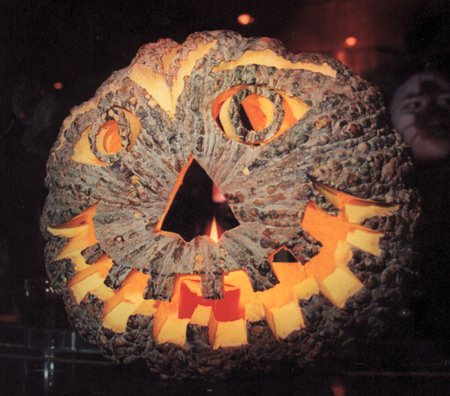Flash photography tends to worry some weekend photographers, so this week we might try to de-mystify lighting.
Camera flashes come in all shapes and sizes. These range from piddley little things in the camera body, which will light up the end of your nose and not much else, through to pop-up flashes that will get to the other side of a (small) room, through to the big hammer-head flashes which bolt on to the camera and can light up the other side of the moon during an eclipse. But do you really need all this ‘firepower’?

Take a look at the photo with this week’s column. The Halloween lantern was photographed at night, and if a flash had been used, the whole atmosphere of this photograph would have been lost. With flash you would have had a washed out pumpkin, and nothing inside. Without the flash, the solitary candle burning inside became the source of light, and the photo really shows up the carving and the fact that it is a Halloween pumpkin. A small amount of light was reflected from the photographer back into the exterior front of the pumpkin, and there you have it – a ‘surreal’ shot of a Halloween pumpkin.
Now the orange color (which you can see on the net version of Pattaya Mail, but unfortunately not in the grey and white hard copy) is something that came with the candle light. What has to be remembered, is that light comes in many different colors. There is in fact a light scale, measured in degrees Kelvin, that shows why the late afternoon shots are ‘warm’ and the other shots are ‘cold’. It also explains why a household light bulb looks orange when photographed, and why objects lit by neon tubes look green. This color shift can be seen with digital cameras if you do not reset the white balance for the prevailing light source.
Getting slightly technical, color temperature is a term that is borrowed from physics. However, the photographic color temperature is not exactly the same as the color temperature defined in physics, as photographic color temperature is measured only on the relative intensity of blue to red. However, we borrow the basic measurement scale from physics and we measure the photographic color temperature in degrees Kelvin (K).
Here is a table to show the differences in light sources.
1000 K Candles; oil lamps
2000 K Low effect tungsten lamps
2500 K Household light bulbs
3000 K Studio lights, photo floods
4000 K Clear flashbulbs
5000 K Typical daylight; electronic flash
5500 K The sun at noon
6000 K Bright sunshine with clear sky
7000 K Slightly overcast sky
8000 K Hazy sky
9000 K Open shade on clear day
The next confusing aspect is that the photographic film and the human eye do not see the colors with the same intensity. This is where the white balance in your camera comes in. Once you get the balance right, then you should be around 5000 K and the colors will be reasonably representative of what they are in true life. Or near enough! You also do not have to know the degrees Kelvin table off by heart to get some different photographs.
Try doing the following this weekend and let’s get some spectacular low-light photographs. Firstly, inactivate the flash, but turn on the automatic mode for your camera. In other words I am going to make this very easy for you. No hard exposure calculations. If you have a tripod, dust it off, but even if you haven’t, continue. What we are about to do is to explore the 1000 K to 2000 K end of the scale.
Go to your local markets at dusk and take some photographs of what goes on there, using just the stall-holder’s naked bulb for illumination. Be prepared to lean against a telephone pole to stop camera shake. But give it a go.
Now try photographing some of the hotels at night. Most are quite brightly lit and once again, you may end up very surprised at what you get. Even try some portraits lit by candles only. Use your imagination, and not the flash!




